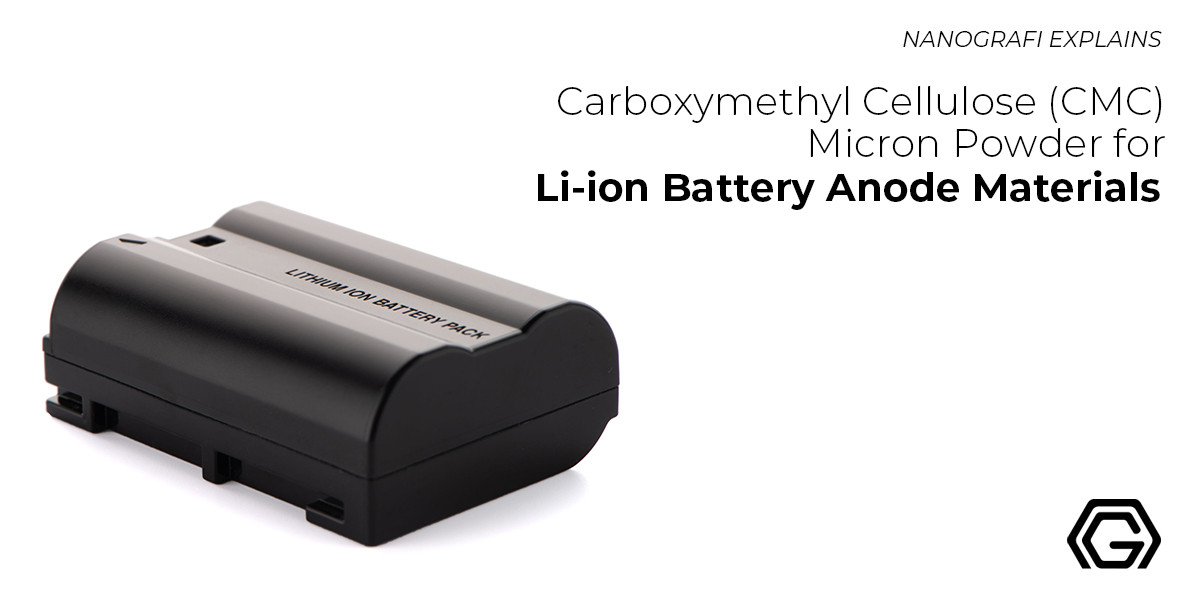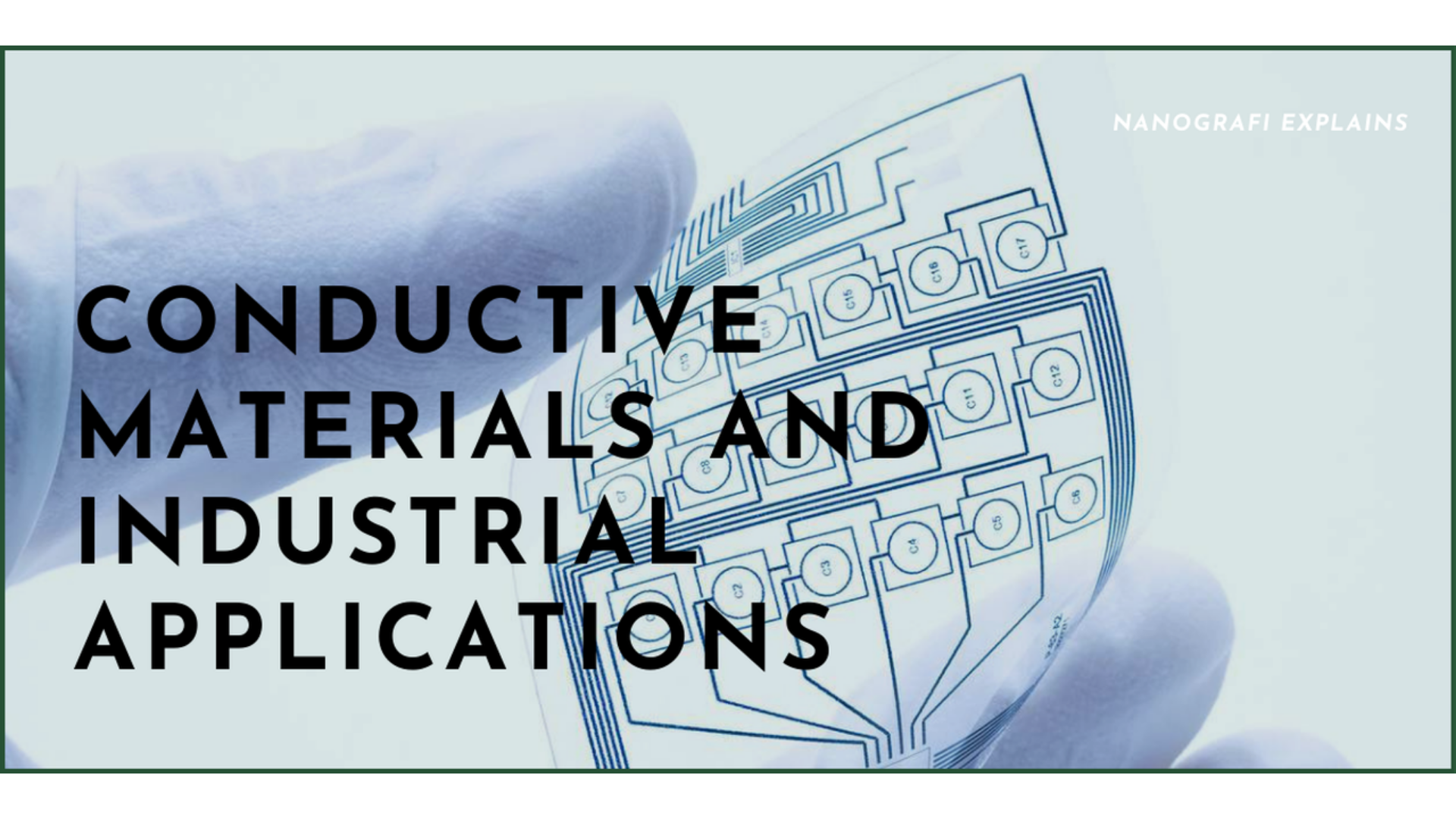Carboxymethyl Cellulose (CMC) Micron Powder for Li-ion Battery Anode Materials
Recently, a novel functional carboxymethyl cellulose lithium (CMC-Li) has been synthesized using cotton as a starting material for the application to modify electrode materials based on the electrospinning technique.
Carboxymethyl cellulose lithium has been used as a binder agent in batteries demonstrating a particular and unprecedented capacity far beyond the theoretical specific capacity of batteries showing excellence electrochemical properties and appropriate stability as well as an environmentally friendly property. Lithium batteries are deemed to be the main source of power or backup power source for portable communication devices as well as mobile electronic devices.
Vahid Javan Kouzegaran
Analytical Chemist (Ph.D.) / Nanografi Nano Technology
Introduction
Lithium batteries have been calling increasing attention in the industrial and scientific sectors because of their remarkable electromotive force and high energy density. Recently, there has been a huge amount of research in order to design novel structures of electrode materials and develop never-before-seen battery binders so that the demand for higher energy density is mitigated and cycle properties of batteries are met. In effect, aqueous binders have shown to possess more advantages properties and merits including lower-cost, battery safety and friendliness ecosystem in combination with water as a dispersant to make them emerge as the ideal binders for environmentally friendly lithium-ion batteries and safety.
In this recent study, cotton has been used as a starting material to synthesize a novel ionic and linear cellulose of carboxymethyl cellulose lithium material taking advantage of a unique technique to complete in just two simple steps. Moreover, composite nanofibers. In continuing LiFePO4 (LFP) is used for further carbonization to achieve CNF/LFP/lithium composite nanofibers for the purpose of modifying LFP nano crystallization, ion doping and carbon covering. In addition to this and for the first time, the carboxymethyl cellulose lithium has been used as a novel binder has been explored to be employed for applications in batteries. The first charge and discharge specific capacity is far beyond the theoretical specific capacity of LFP with the discharge and charge platform to be really small battery polarization degree to finally improve the performance of batteries.
Furthermore, carboxymethyl cellulose lithium has been compared with different materials in order to evaluate its capability for the application in Li-ion batteries. The results show this newly developed technique can be employed to study cellulose, and nanomaterials and batteries to provide a creative idea for researchers in this area. Carboxymethyl cellulose lithium has shown to have a unique molecular structure and is regarded as a polyhydroxy water-soluble polymer derivative. Studies focused on electrospinning for the case of the water-soluble ionic cellular polymer have been challenged a lot in battery designing field and studying electrospinning for carboxymethyl cellulose insulation because it is difficult to find an appropriate solvent for water-soluble polysaccharides ionic polymers for electrospinning at the moment.
Cellulose and Carboxymethyl Cellulose Properties
Cellulose occurs abundantly and naturally as raw material on Earth amounting billions of tons made by many different plant species. Technically, cellulose is a cheap, light-weight, thermally stable organic compound and one of the most common agents to meet the standards of sustainable chemistry since it is naturally biodegradable as well as renewable. Within plants, cellulose fibers are produced by microfibrils that are highly crystalline entities. In the past years, cellulose has drawn a lot of attention due to its considerable impact on areas like flexible electronics and displays, textiles, sensors, laminates, pharmaceutical coatings, food and actuators 2. Cellulose fibers comprise a chain of hundreds to thousands of D-glucose in a linear configuration. They are regarded as the important structural members of different species of algae and the walls of green plant cells. The walls of plants cells are composed of cellulose microfibrils with crystalline structure with a width of about 93 nm containing some 20 to 40 fully extended cellulose chains which behave like strengthened steel in the fabric of the walls and are surrounded by polysaccharides including hydrophobic non-crystalline lignin and hemicellulose which are nanocrystalline structures too. Therefore, it should be taken into consideration that cellulose-based nanostructures like cellulose nanofibers are originally biomolecules and abundantly found on Earth as well as being synthesized naturally in larger quantities through the natural photosynthesis procedure 3. Cellulose nanofibers (CNFs) are typically as long as several micrometers and 5 to 20 nm wide. They are not soluble in aqueous solutions but are highly dispersed to make a suspension with a given viscosity. Cellulose nanofibers have the ability to disperse meaning there is a possibility of spinning the suspension. They also possess anisotropic physical characteristics.
Carboxymethyl cellulose which is also known as cellulose gum is a derivative of cellulose with functional groups of carboxymethyl bound to some of the hydroxyl groups of glucopyranose monomers that make up the backbone of cellulose. It is generally used as its sodium salt in the Market under the name Tylose. Carboxymethyl cellulose is synthesized by the alkaline catalyzed reaction of cellulose with chloroacetic acid. Polar carboxyl groups as organic acid render the cellulose soluble and chemically unreactive agent. Technically this material is known as CMC and is widely used in detergents. Once the purification process is carried out, carboxymethyl cellulose is used to produce pure CMC with applications like in toothpaste production, pharmaceuticals and food. Carboxymethyl cellulose is a viscosity modifier or thickening agent used to stabilize emotions in a number of products. It also serves as a constituent of many products such as paper, reusable heat packs, detergents, diet pills, textile sizing, water-based paints and laxatives. This material is basically non-toxic and is generally considered to be hypoallergenic (slightly allergenic) and the main source of fiber is cotton linter or softwood pulp. Carboxymethyl cellulose also has a broad range of applications in gluten-free and reduced-fat food products.
To get more information about battery materials,
you can read our blog post here.
Conclusion
Considering the results of a large number of experiments in the literature, electrospinning is proposed as an appropriate and efficient technique for water-soluble ionic cellulose carboxymethyl cellulose insulation. The water-soluble CMC-Li nanofiber is achieved by electrospinning the functional fiber material seemingly to break through the difficulties and challenges in previous works. Basically, the fiber materials could be employed in feel materials drug embedding and mesoporous materials. However, in this technique carboxymethyl cellulose is designed to process the modification of lithium battery electrode materials taking advantage of this technique which not only meets the demand for carbonizing and modifying electrode materials through electrospinning, it profoundly increases the content of freely mobilizing lithium ions in the electrode material efficiency and embedding ions between cathode and anode electrodes. Based on this technique, the resulting electrode material forms a stable network structure model capable of improving the charge and recharge capacity of the whole lithium-ion batteries.
To get more information, you can visit Blografi.
References
Online, V. A. batteries †. 24859–24862 (2014) doi:10.1039/c4ra01351d.
Kafy, A. et al. Cellulose long fibers fabricated from cellulose nanofibers and its strong and tough characteristics. Sci. Rep. 7, 1–8 (2017).
Isogai, A. Review Development of completely dispersed cellulose nano fi bers. 94, 161–179 (2018).
Recent Posts
-
Advanced Materials for Unmanned Aerial Vehicle (UAV) Protection Against Laser
Consider a UAV on a critical mission, rendered inoperative by a sudden laser attack. With the increa …26th Jul 2024 -
Simulation and Modeling of Material Properties
Our world is composed of a dazzling array of materials, each with its own unique properties that dic …19th Jul 2024 -
Advanced Coatings for Superior Corrosion and Wear Resistance
Corrosion and wear pose significant challenges across various industries, leading to substantial eco …12th Jul 2024






